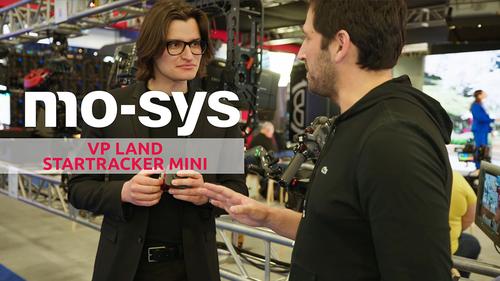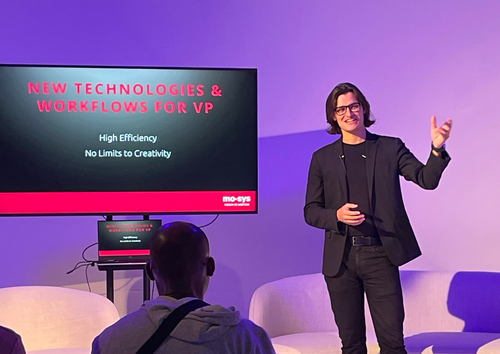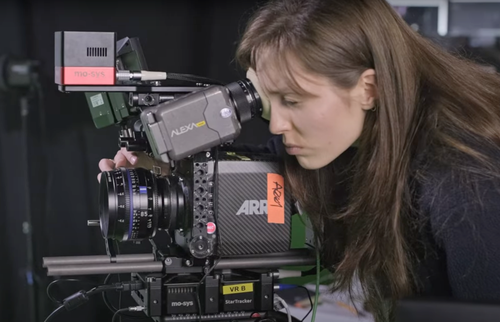What is Motion Capture Acting?
When the unmistakably quirky Gollum first appeared on our screens back in 2001, audiences were taken by his unique character conveyed purely through CGI. Despite the fact that MoCap had already been around for a while, this moment signified the shifting of Motion Capture acting into the mainstream.
Andy Serkis’ take on Tolkien's now infamous Lord of the Rings character provided the movie industry with a true taste of the potential of Motion Capture Acting. The result was a complete revolution. Not just for the film industry, but for creating realistic and cinematic gaming experiences as well as for use in sports therapy, farming and healthcare.
From Middle Earth to Pandora: How motion capture works
In the last two decades we’ve watched numerous ‘behind the scenes’ images of Serkis jumping around in a MoCap suit equipped with retroreflective markers. During the filming of Peter Jackson’s Lord of the Rings (2001), these retro reflective optical markers allowed motion capture technology to accurately record his facial and body movements through a series of motion tracking cameras. This data was then transferred to a graphics engine to create a ‘skeleton’ which acted as a base for the animated body of Gollum.
This early MoCap technique, which is still used today by some, is known as an ‘outside-in’ system; this means that the cameras look from a perspective ‘outside’ of the MoCap environment, and into the movement of the actor. The second, more recent technique (which we’ll explain further below), involves the use of Inertial Measurement Units (IMUs) to capture an actors movement regardless of any space or location (Xsens’ MVN system is an example of this type of MoCap setup).
Performance capture
Seeing the potential of the technology to enhance productions, a number of companies have since invested in technology that more accurately records facial, hand, and finger motion. Known informally as ‘performance capture’ tech, these more targeted systems give motion-caption actors a greater degree of creative freedom whilst improving the credibility of their CGI digital characters.
And their increased use in film production has not gone unnoticed. James Cameron’s Avatar (2001), for instance, was highlighted by critics for its innovative use of performance capture tech when creating the ethereal Na’vi. Matt Reeves’s War of the Planet of the Apes (2017), furthermore, was praised for its use of facial motion capture; Andy Serkis, who played the leading role, wore 132 mini retro-reflective markers on his face in order to record the exact movement of his facial muscles.
Free-environment motion capture
In 2011, Mo-Cap was upgraded again so it could be taken out of the studio and used on location. This began with Rise of the Planet of the Apes (2011), and allowed actors to fully immerse themselves in mixed reality environments whilst giving producers unparalleled creative freedom. Shooting outside also meant adapting the technology to varying climates. Mo-cap motion capture suits were made much more robust with the reflective markers upgraded to infrared pulse so directors could film in bright light (an example of active optical motion capture).
The production teams of Dawn of the Planet of the Apes (2014) and War of the Planet of the Apes (2017) took the tech even further, filming in humid conditions and at night. This came alongside advancements in the rendering textures of fur, skin and eyes, allowing audiences to enjoy the most cinematically-gripping visuals of photo-realistic simulations.
The magic of Motion Capture Acting
The beauty behind motion capture as a form of acting lies in the emphasis on physicality and embodied movement and expression. In an interview with WIRED Serkis explains, “It’s not just about mimicking behaviour. This is about creating a character.” This includes developing the psychological and emotional journeys to pour into the character. “It’s not just about the physical build of the character, but also the internalisation,”explains the actor. “That’s why the misconception that performance capture acting is a genre or type of acting is completely wrong, It’s no different to any process you go through to create a role... the actor’s performance is the actor’s performance.”
The combination of professional acting skills with advancements in Mo-cap technology has led to the development of many memorable CGI characters in recent years. From Serkis's Portrayal of Caesar in Planet of the Apes to Benedict Cumberbatch and his unique take on the dragon Smaug in The Hobbit, motion capture is giving actors more powerful tools to portray characters and ultimately, enhance storytelling.
If you’re interested in learning more about the future of the film industry, check back regularly for more articles from Mo-Sys Academy. Drawing from years of experience in virtual production for film and tv, and as one of the UK’s leading camera tracking suppliers, we’re aiming to educate the next generation of producers.




